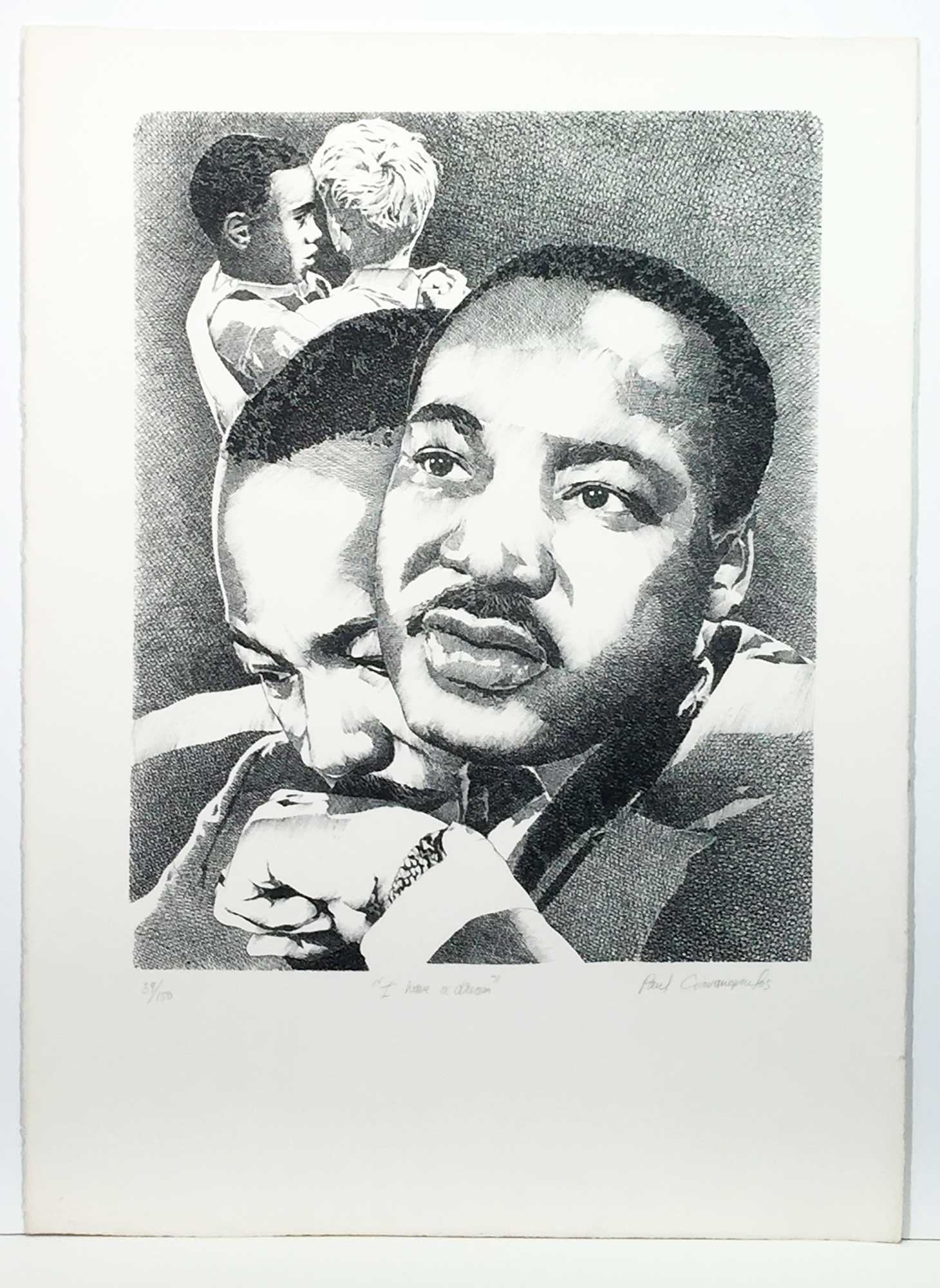
Paul Giovanopoulos
I Have a Dream
Lithograph, 20th Century.
Edition No. 39/150.
Image: 17 x 22
Paper: 22 x 30
Excellent condition.
Inventory Number: PG1001
Pencil signed and numbered by artist.
Portrait of Martin Luther King Jr. with children in background.
Call for price: 201-871-3577
Paul Giovanopoulos was born November 11, 1939 in Kastoria, Greece. He has since made his mark as an American artist, having attended the New York University and School of Visual Arts, before obtaining US citizenship in 1961 at the age of 22.
Paul still lives in New York, and has exhibited work across the United States, and Europe. His work is collected by such luminaries as Steve Wynn, James Cameron, Sylvester Stallone, and Michael Bloomberg. It has been featured within more than fifty private and corporate collections, including the New York Public Library and Harvard’s JFK School of Government.
Paul Giovanopoulos’ artwork is defined by complex investigation of simple objects. His original vision involved a carefully composed repetitive grid of panels as the base of a painting. Giovanopoulos then interpreted each panel, transforming the object within through “visual signatures” from art history, cultural icons and concept. In making art this way, he became at once creator, collector and curator of each canvas.
Continuing this idea of transformation, Giovanopoulos has gone on to create large single image paintings that involve a similar thought process. By melding the aforementioned interpretive elements into one visual, he conveys a disconcerting sense of familiar and unknown, anarchy and order. His sense of visual mischief has also led Giovanopoulos to create a series of Group paintings, wherein real people throughout history, be they famous or notorious, celebrated or reviled, are surrealistically combined in one canvas. Intellectually, these groups are impossible, but Giovanopoulos not only makes them work, he makes it all seem perfectly logical. After all, who better to play poker with Ghandi than da Vinci?
Even as his work sometimes borders on chaotic, Giovanopoulos maintains a firm hand on the overall visual rhythm. The paintings combine master draftsmanship with tireless invention in a dry humor that stands back from academic painting and, essentially, draws a mustache on it.
Although the wit in Giovanopoulos’ work is sometimes caustic, his use of appropriation is never grim. Rather, it is about the joy of looking, seeing and thinking, and the luxury of many solutions to one problem.

